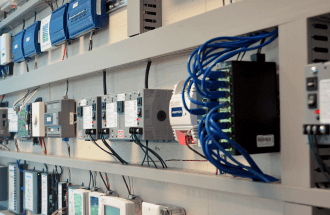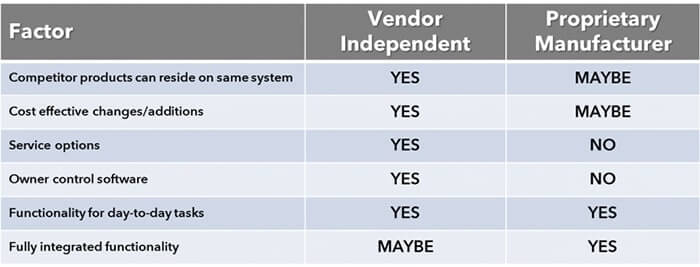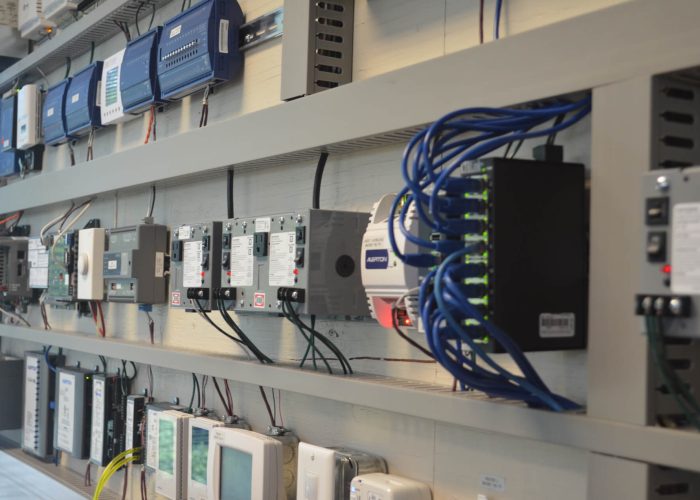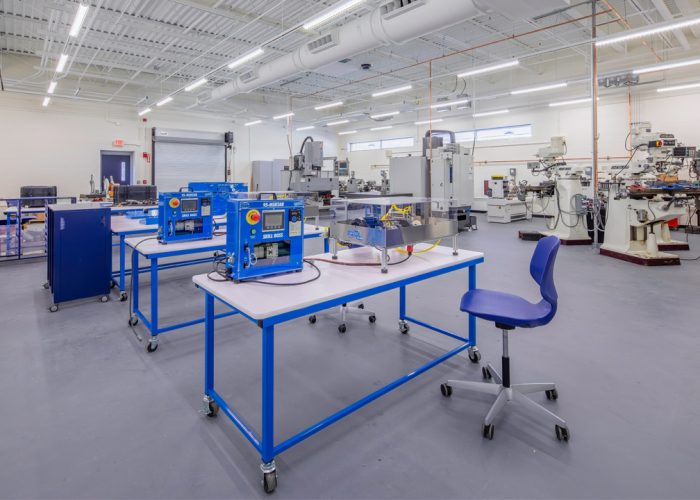The term independent is defined as “not influenced or controlled.” Embracing a vendor independent controls system in your facilities will ensure that all of the control is in the owner’s hands. The options for building automation systems (BAS) are abundant, and can quickly become overwhelming. In order to choose the platform that will benefit your buildings the most, it’s important that you have a good understanding of building automation systems and the different options available.
What is a Building Automation System?
When facilities managers talk about your BAS, they are referring to the centralized control system of your building’s heating, ventilation, and air conditioning (HVAC), along with other systems such as lighting, security, and power generation. The BAS is responsible for keeping your learning environments optimal and your building running efficiently throughout the various seasons.
It is important not to get caught up in system protocols, or how the equipment communicates, when deciding on a BAS for your facility. Most systems on the market can communicate with multiple protocols. The real focus should be on your controls platform. Obtaining an open platform provides the ability to easily integrate almost any kind of protocol; avoiding proprietary systems will save owners the associated risks.
On the opposite end of the spectrum, proprietary protocol systems create “captured facilities” by tying BAS to a single vendor or equipment company. Initially, the BAS could be less expensive to install, but over time the associated costs continue to increase. Servicing, repairs, and replacement parts must now all come from that single vendor, which in turn eliminates cost advantages that come with vendor independent service options.
Owner Benefits of a Vendor-Neutral System
The main advantages to a BAS that is vendor-neutral can be separated into four distinct, but intertwined considerations: Lifetime cost, normalization of systems, flexibility on future changes, and competitive bidding on future expansion. You can view these different parts as a puzzle where each piece is important, but they work best when combined together.

LIFETIME COST
The first major owner benefit comes from the freedom and control an owner has over his systems with vendor independence. The options available for maintenance, servicing, and upgrades all drive down the lifetime cost. A proprietary protocol system can limit an owner to a single brand of products, service options, and upgrades. The owner is essentially locked into paying whatever price the specific vendor decides to sell their services for.
With a vendor-neutral system, you are afforded options in almost every BAS decision you make. The switching cost to change equipment vendors is significantly reduced as the platform can handle a variety of protocols and equipment brands.
NORMALIZED SYSTEM
The concept of achieving a normalized system not only benefits owners, but also the facilities team. The normalization of your BAS essential brings all the data together from your systems and displays it for building occupants, owners, or facility managers in a convenient dashboard. Often older building will have different equipment vendors with different front end displays. This requires a large amount of time to maintain equipment efficiency because facility managers must check a multitude of different systems.
A vendor independent platform allows owners to plug in virtually any existing equipment into a single platform and normalize their data into a single front end display. This is beneficial for a number of reasons. With this single platform in place you would not only save time when viewing buildings with multiple equipment vendors present, you can also save time during building commissioning. This commissioning process is an ongoing quality assurance procedure that helps your facilities maintain efficiency and cost savings.
FLEXIBILITY FOR THE FUTURE
While normalized systems can be an immediate advantage for owners, independent platforms also provide major facility benefits in the long-term. Flexible control platforms enable easy management of building’s upgrades. The future of controls looks to be moving towards programming standardization at the controller level, which means system brands are becoming increasingly irrelevant as an owner decides to upgrade.
It is common to see facilities with three or more different brands of control systems on their equipment. As buildings age and new systems are required, forging ahead with different brands of controls has never been easier to implement.
COMPETITIVE BIDDING
The largest advantage when dealing with system cost comes from an owner’s ability to receive competitive bids for maintenance, servicing, renovations, and new additions. Can you imagine trying to add new HVAC equipment, but getting locked into a high price because you have to maintain a single vendor? At the end of the day, when systems are compatible with each other, an owner is able to manage their buildings effectively.

Importance of Education
In order to find the system that best fits your buildings, it is crucial to be educated on the risks and rewards involved with choosing either a proprietary or vendor-independent platform. Weighing short and long-term advantages is a great place to start. If you have any questions about your facilities or their BAS platforms, please contact your Performance Services representative.





